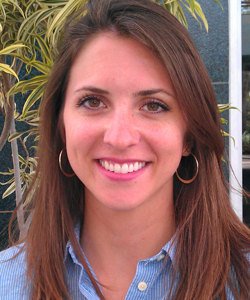Abstract
The relationship between organic (δ13Corganic) and inorganic carbon isotope records (δ13Cinorganic) is assumed to be a direct correlation. This relationship was not found in periplatform sediments recovered during Leg 166. Periplatform sediments from a mixed carbonate-clastic margin (Leg 133) and a cool-water carbonate platform (Leg 182) will be analyzed for δ13Corganic composition, and compared to published δ13Cinorganic records to determine the relationship. This study will investigate whether the signal identified at Leg 166 is a local phenomenon, or a globally observable pattern indicative of carbon cycling. These results will have implications for interpretations of global carbon cycling throughout geologic history.
Biography
My interest in geology began during my involvement in the Environmental Fellows Program at the University of Illinois, Urbana-Champaign. For my bachelor’s thesis, I studied the effects of anthropogenic waste on coral morphology on the reefs of Curacao, and discovered a passion for geological systems. Currently, I am starting the third year of my Ph.D. with Professor Peter K. Swart at the University of Miami’s Rosenstiel School of Marine and Atmospheric Sciences. I am investigating the modern processes that affect the relationship between inorganic (δ13Cinorganic) and organic (δ13Corganic) carbon isotope records in periplatform sediments. During the next year, I will assess this relationship in cores from the Great Barrier Reef (ODP Leg 133) and the Great Australian Bight (ODP Leg 182) with the goal of gaining an accurate perspective on the processes and mechanisms that influence δ13Cinorganic and δ13Corganic records at a variety of carbonate margins.







